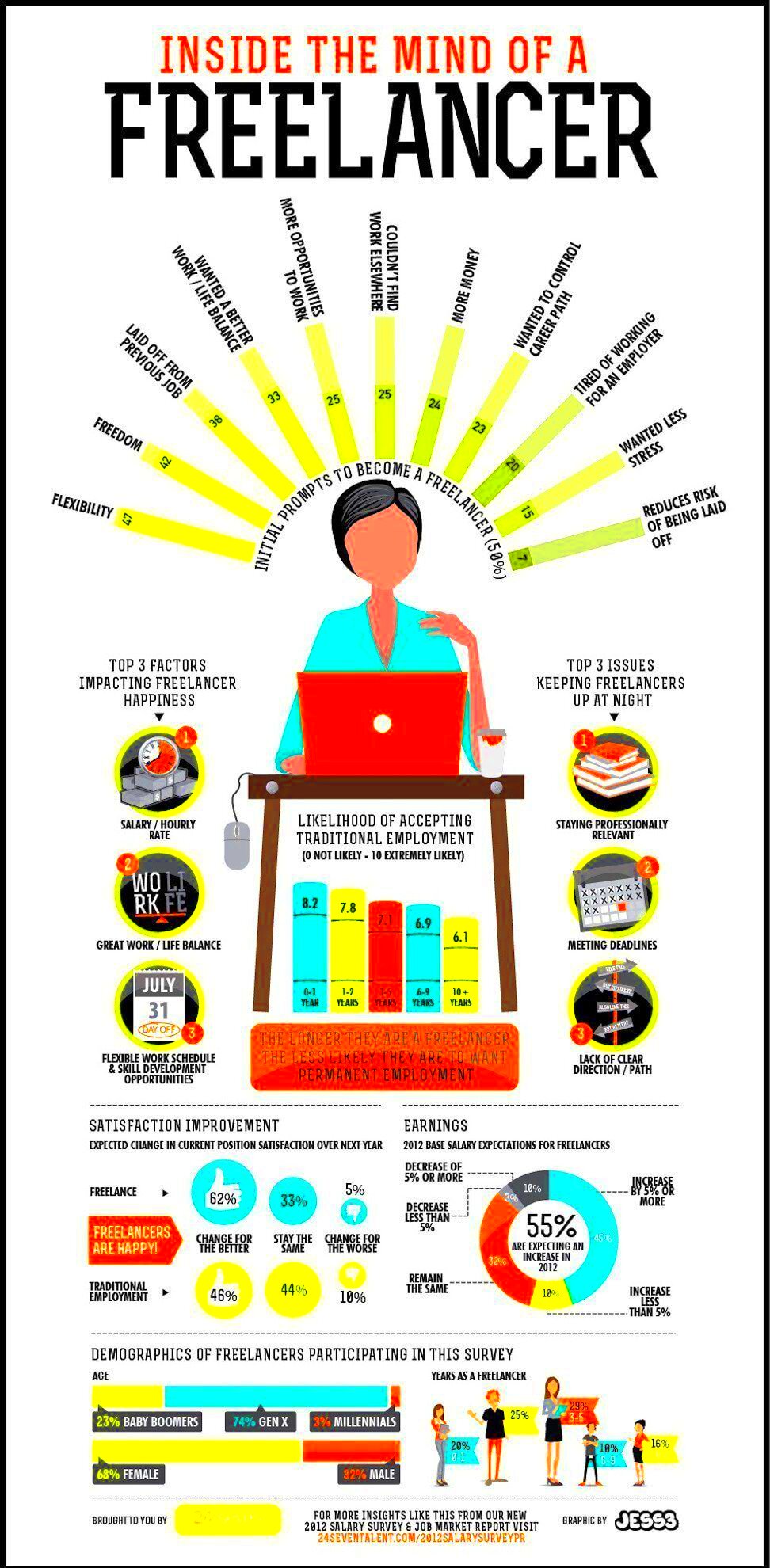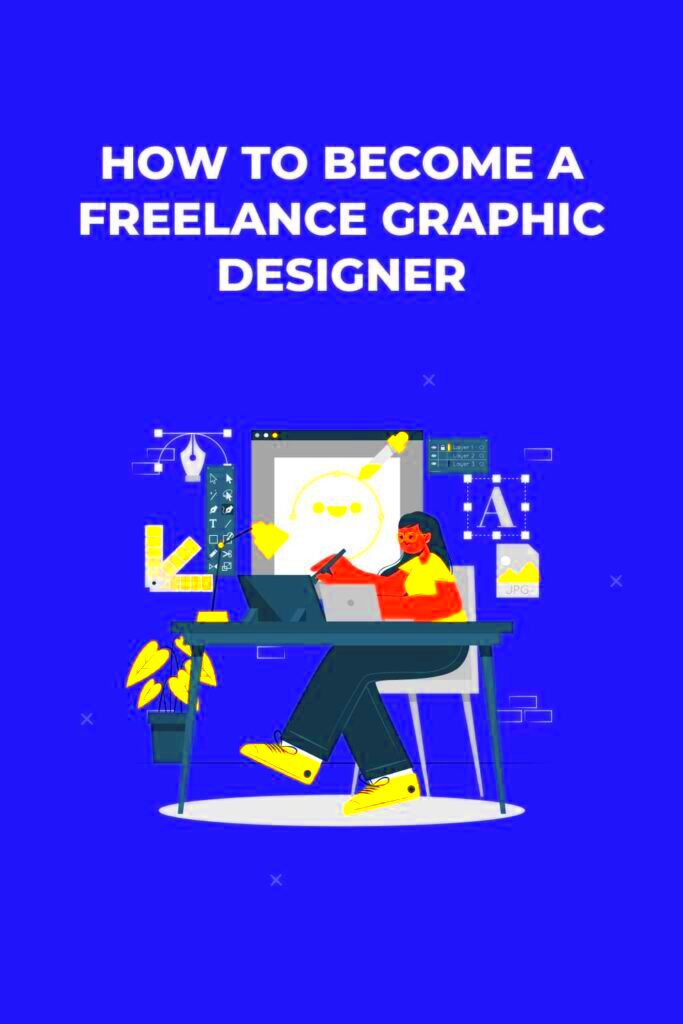In the visual communication field, freelance infographic designers are essential. They turn complicated data into fascinating, simple-to-grasp graphics that narrate a tale. This requires not only creativity but also knowledge of information design and effective message delivery. Infographics can seize audience’s attention and render data more comprehensible in an era of dwindling attention spans.
As a freelancer designer, you will find yourself working with a wide range of clients from different fields. This may include developing illustrations for advertising campaigns, producing educational resources or crafting social media visuals. Your mission is to make information clearer and attractive at the same time. Dominating over imagination in harmony with straightforwardness will be inevitable in order for your designs to reach out the people whom they were meant for.
Essential Skills for Freelance Infographics Designers

Being a freelance infographics designer means that you must possess an array of important abilities to succeed. Below is what it entails:
- Graphic Design Proficiency: You need to be well-versed in design software like Adobe Illustrator, Photoshop, or Canva.
- Data Visualization: Understanding how to present data visually is crucial. You should know how to interpret and transform raw data into visuals.
- Typography: Knowing how to choose and use fonts can make a significant difference in the readability of your infographics.
- Color Theory: Colors evoke emotions and can influence how information is perceived. Understanding color combinations is vital.
- Communication Skills: You need to communicate effectively with clients to understand their needs and preferences.
- Time Management: Being a freelancer means juggling multiple projects. Good time management ensures you meet deadlines.
Also Read This: Do I Get to Choose My Own Schedule on Fiverr?
Finding Your Niche in Infographics Design

Being an infographics designer means knowing your specialization in a market that is saturated. A niche enables one to concentrate on certain themes, fields or forms of design that one loves and is good at. Some ways you can use in finding your niche include:
- Assess Your Interests: Think about the subjects you’re passionate about. Do you love health, technology, education, or marketing? Your interests can guide your focus.
- Evaluate Market Demand: Research what types of infographics are popular in the market. Tools like Google Trends can help identify trending topics.
- Review Your Skills: Analyze your strengths. Are you better at statistical data, storytelling, or creative design? Use your skills to define your niche.
- Test the Waters: Create a few infographics in different niches and see which ones resonate most with your audience.
- Build a Portfolio: Once you identify your niche, focus on building a portfolio that showcases your best work in that area.
Locating your area of specialization can draw in clients searching for unique expertise, resulting in a more gratifying and thriving freelancing profession.
Also Read This: Can Fiverr Contact Your School? Understanding the Implications
Building a Strong Portfolio to Attract Clients
As an independent designer of infographics, your portfolio is a representation of you- a calling card. This is an opportunity for you to put your best foot forward by showcasing your best work and demonstrating skills that will be worthy to a client who is looking for such services. In addition to showing design talents, a strong portfolio also reveals what one knows about information and data visualization well enough. Clients searching through portfolios need variety in works that correspond with their requests.
Some suggestions on how to create an alluring portfolio include:
- Showcase a Variety of Styles: Include different types of infographics such as statistical, informational, and process-based designs. This variety will show your versatility.
- Focus on Quality Over Quantity: It's better to have fewer, high-quality pieces than a lot of mediocre work. Aim for at least 5-10 strong examples.
- Include Case Studies: Explain the problem, your design process, and the results achieved. This helps clients understand your thought process and the impact of your work.
- Keep It Updated: Regularly refresh your portfolio with new work to keep it current and relevant.
- Make It Easy to Navigate: Organize your portfolio logically and ensure it is visually appealing. A well-structured portfolio will keep clients engaged.
If you invest in your portfolio, you can captivate more customers and leave an indelible impression; thus, strive to improve your portfolio.
Also Read This: What Does Source File Mean on Fiverr?
Setting Your Rates as a Freelance Infographics Designer
As a free-lance infographics designer, your costs can be difficult to establish, but it is critical for safeguarding against being underpaid. Depending on your background, skills, and features of the job, there are numerous prices that one can charge. In order not to discourage clients, one stands a chance of pricing low yet remain relevant in the industry.
The rates you charge depend on a variety of factors.
- Experience Level: If you’re just starting, you might charge less than someone with years of experience. However, don’t undervalue your skills.
- Project Complexity: More complex projects that require extensive research or design should be priced higher.
- Time Investment: Estimate how long a project will take and factor that into your pricing. Consider hourly rates or project fees.
- Market Research: Look at what other freelancers in your niche are charging. This gives you an idea of the going rates.
- Client Budget: Sometimes, clients have specific budgets. Be open to negotiation, but know your minimum acceptable rate.
Recall that the rates you charge should portray the value that you deliver. It is advisable not to fear increasing your charges if at all you have acquired additional capabilities and wisdom.
Also Read This: Top 10 Fiverr Gigs for Virtual Assistance in 2024
Marketing Yourself Effectively on Platforms
In competitive freelancing, you need to know how to market yourself well in order to get clients. There are several platforms that can be used for this; therefore, it is important to take advantage of these to show your work and reach out to potential clients. A proper marketing strategy may change the game when using Fiverr, Upwork or social media.
So here’s a few strategies that you might want to think about:
- Create an Engaging Profile: Your profile should be complete, highlighting your skills and experience. Use a professional photo and write a clear bio that showcases your passion for infographics design.
- Optimize for Search: Use relevant keywords in your profile and gig descriptions to improve visibility in searches. Think about what potential clients might look for.
- Showcase Your Work: Regularly update your portfolio on these platforms. Use high-quality images of your infographics to attract attention.
- Gather Reviews: Encourage satisfied clients to leave positive reviews. Good feedback builds trust and can help you stand out.
- Engage with the Community: Join relevant groups or forums on social media and share your knowledge. Networking can lead to new opportunities.
Relationship building and image development is what effective marketing is all about! Spend some time professionalizing yourself, you will reap the fruits later on in your freelance journey.
Also Read This: Can You Be a Fiverr Affiliate? A Comprehensive Guide
Networking with Other Designers and Clients
As an infographic designer, networking is crucial for a successful freelance career. Interacting with other designers and prospective clients could unlock fresh doors of opportunities and lead to growth in your profession. On top of job hunting, this would involve education, exchange of ideas, and industry backing.
In this article, some of the most effective ways to network have been put forth.
- Join Online Communities: Platforms like LinkedIn, Facebook, and design forums are great places to meet other designers. Participate in discussions, share your work, and ask for feedback.
- Attend Industry Events: Look for conferences, webinars, or local meetups focused on design. These events provide a chance to connect with other professionals face-to-face.
- Collaborate on Projects: Teaming up with other designers or businesses can help you expand your skills and gain exposure to new clients. Collaboration can lead to amazing results.
- Utilize Social Media: Share your work on platforms like Instagram and Twitter. Engage with other designers by commenting on their posts and sharing their work.
- Ask for Referrals: Don’t hesitate to ask satisfied clients to refer you to others. Word-of-mouth can be a powerful tool in gaining new clients.
Bear in mind that networking isn’t a one-way street. Be honest, lend assistance after you can and develop significant connections that will prosper both you and your associates.
Also Read This: What Happens If a Fiverr Order Is Late?
Frequently Asked Questions
When you are beginning your profession as a freelancing designer of infographics, there could be some queries pertaining to it that are frequently asked. The following is a selection of responses to some of those common queries to help shed light on your way:
- How do I get started as a freelance infographics designer? Begin by learning the essential design skills and tools. Create a portfolio and start marketing yourself on freelance platforms.
- What software should I use? Popular tools include Adobe Illustrator, Photoshop, and Canva. Choose the one that fits your style and project needs.
- How can I find clients? Use freelance platforms, social media, and networking events to connect with potential clients. Building a strong online presence is key.
- What should I include in my portfolio? Showcase a variety of work, highlight your best projects, and include case studies that explain your design process.
- How do I handle client feedback? Be open to feedback and use it constructively to improve your designs. Good communication can help ensure you meet their expectations.
Your freelance journey will be easier if you answer these questions.
Conclusion and Final Thoughts
To be a successful infographic designer who works as a freelancer it takes both creativity and technical know-how along with proper marketing strategies. In doing so, understanding your part will enable you to create a good portfolio while interacting with people so that you can have that career worth having.
Bear in mind that no two designers’ paths are alike. Therefore, persistently be willing to learn and adjust yourself accordingly to any changes that may occur in the line of duty while at the same time you shouldn’t shy away from putting your uniqueness on display. When faced with challenges treat them as chances to grow and never forget about honing your skills for betterment purposes.
When moving ahead, pay more attention to developing networks, both with clients and colleagues in the field of design. Such ties can give rise to teamwork opportunities, word of mouth recommendation chances as well as a social framework that makes your self-employment nice. If you pursue your interests and never give up, success will be yours as an independent infographics decorator.




